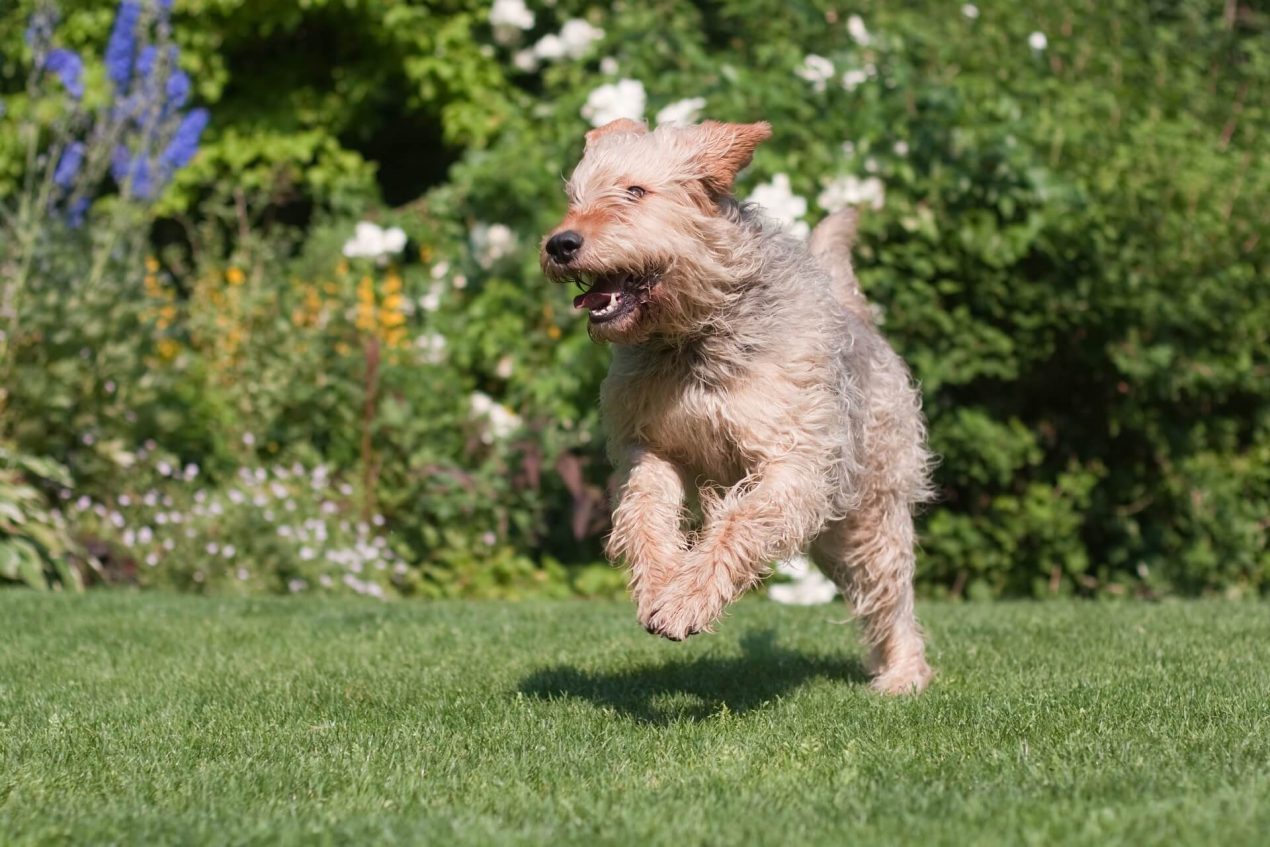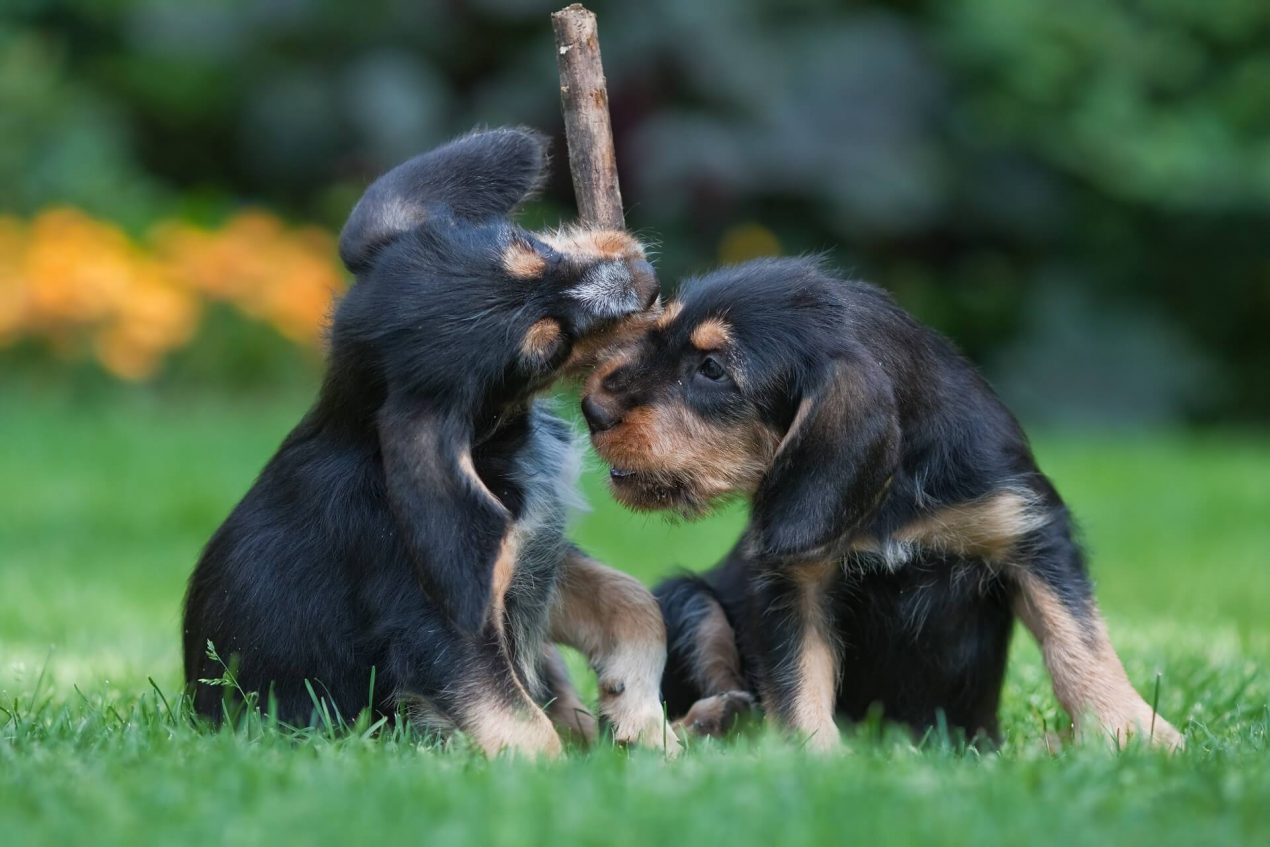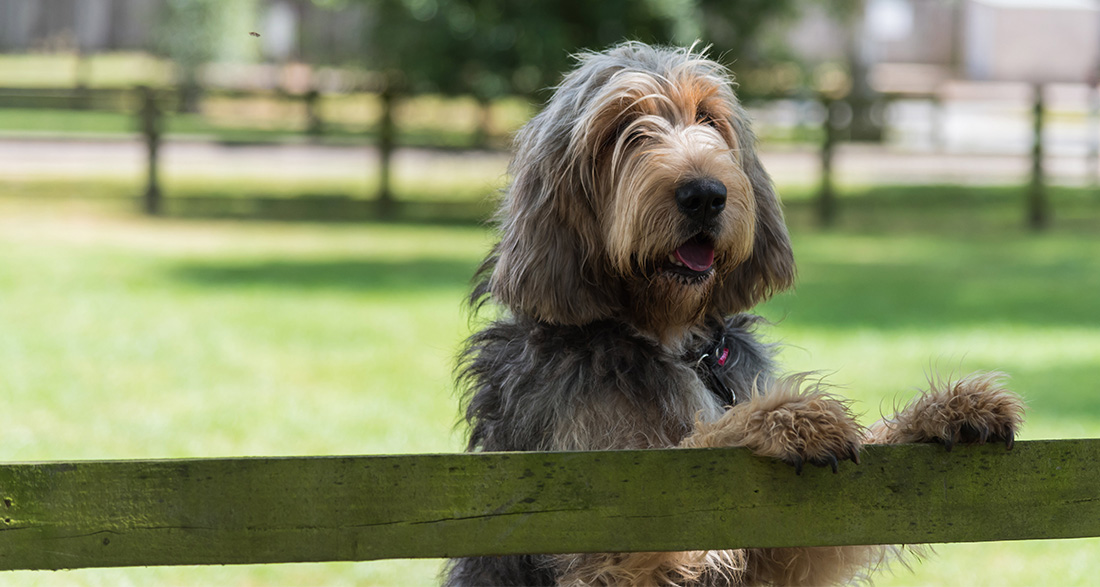Otterhounds epitomize coziness and friendliness. They show no aggression and greet strangers with a wagging tail. However, they are also notorious for their stubbornness, and anyone attempting to train an Otterhound must bring a lot of patience and humor to the table.
History of the Otterhound
Otterhounds were first mentioned around the year 1000 AD. Otters were a plague at the time, decimating fish stocks, and were hunted with packs of dogs. However, these dogs likely had little in common with today’s Otterhounds. The breed originated in the 19th century in Great Britain. The goal was to breed a dog that was endurance and enjoyed working in the water. The dog needed an excellent sense of smell because it was supposed to assist humans in hunting otters. Otters felt comfortable in fish-rich waters and also inhabited ponds near human settlements. Additionally, they were a popular prey because of their fur.
The British crossed Bloodhounds with dogs from France like the Griffons de Bresse. Dogs like the Water Spaniel and Foxhounds are also believed to be ancestors of today’s Otterhounds. However, due to the intense hunting of otters, their numbers decreased significantly, leading to a decline in the Otterhound population. By the early 20th century, there were only a few specimens left, bred by enthusiasts. However, a standard was not established until 1974. The breed was recognized by the FCI in 1979.
Even today, the breed is very rare. It is estimated that there are only about 1000 Otterhounds worldwide. In Great Britain, the number of Otterhounds is estimated at around 400. The same number of Otterhounds likely lives in the United States. The rest are spread around the world. Breeders do not have their own association; they are organized in the Basset-Hound-Club of America.
The Otterhound is on the list of endangered livestock breeds. He can no longer pursue his original task of otter hunting as it has been banned. However, due to his excellent sense of smell, even among dogs, he will be able to pursue other “professions” in the future, such as search and rescue or drug detection.
Breed Overview
GROUP: Hound
HEIGHT: 24 to 27 inches tall
WEIGHT: 80 to 115 pounds
COAT: Dense, rough, coarse topcoat; Short, wooly, slightly oily undercoat
COAT COLOR: Black, gray, tan, wheaten, black and tan, liver and tan, blue and cream
LIFE SPAN: 10 to 13 years
TEMPERAMENT: Friendly, bright, energetic, even-tempered, boisterous
HYPOALLERGENIC: No
ORIGIN: England
Nature and Character
The ancestors of Otterhounds hunted in packs. Therefore, they have a pronounced social behavior. They are not aggressive and are friendly to everyone and everything. They also get along well with children and can tolerate a bump or a pull on their hair. Of course, small children should still not be left alone with Otterhounds. They are always in a good mood and often make their owners laugh. They stand faithfully by their humans and do not like to be left alone. However, this does not mean that they will do everything their human wants; quite the contrary.
As hunting dogs, they are used to thinking and acting independently. Therefore, they are said to be stubborn and headstrong. They get along great with other dogs, and living with other animals is usually not a problem. For the Otterhound, all animals living in the house are part of the pack. Otterhounds are adventurous and love exercise. They also enjoy anything related to water. In their original role as otter hunters, they often spent hours in the water. They are enduring and can be out for up to twelve hours. However, at home, they are rather cozy and enjoy resting.
| Affection Level | High |
| Friendliness | High |
| Kid-Friendly | High |
| Pet-Friendly | High |
| Exercise Needs | High |
| Playfulness | High |
| Energy Level | High |
| Trainability | Medium |
| Intelligence | Medium |
| Tendency to Bark | High |
| Amount of Shedding | Medium |
Acquisition of an Otterhound
If you desire an Otterhound, you may need to bring patience along. They are rare dogs, and you may have to put yourself on a waiting list with breeders. In some cases, you may also have to travel long distances to reach the breeder. A trip abroad may also be possible if you are searching for a breeder. In the EU, Otterhounds are more common in Finland and the Netherlands.

What should I look for when buying?
With such a rare breed of dog, there is a risk of inbreeding and close kinship. Therefore, you should definitely look for a reputable breeder. This is even more important with Otterhounds than with other breeds. With a reputable breeder, you will not only get to know the parent animals and the puppy’s home, but you will also be able to check the pedigree. A reputable breeder will answer all your questions and support you in case of problems even after the purchase.

Development and training of the puppy
Otterhounds are among the friendliest dogs out there. They are laid-back and have no ambition to become an alpha. However, they have the typical stubbornness of hunting dogs, so you will need a lot of patience and a good sense of humor for training. Blind obedience is not in the nature of Otterhounds. They only do what they consider right and important. Nevertheless, they should learn basic obedience.
So, you have to find the right balance between what commands the dog needs to know and follow and what you can let him get away with. Visiting a dog school is definitely helpful. If possible, look for a dog school that already has experience in training hunting dogs. If you have no experience with dogs, attending a dog school is essential.
How do I keep an Otterhound?
Due to the size of the Otterhound, it is clear that it is not suited for life in the city and a city apartment. Otterhounds love being outdoors in nature. Ideally, they should have a garden and a place to swim.
Activities with the Otterhound
Daily long walks with the Otterhound are mandatory. But he also loves to accompany his humans on a bike or horse ride. Otterhounds are well-suited for nose work. Therefore, they are enthusiastic about any activities where they can use their outstanding sense of smell, such as Mantrailing or being part of a search and rescue dog team.
Health and Care
Otterhounds are considered healthy and robust. Like all large dogs, they are prone to hip and elbow dysplasia, but with the right nutrition and exercise, the risk can be minimized. Again, it is important to pay attention to a reputable breeder. They will only breed with healthy parents and conduct the necessary examinations.
Despite their long fur, Otterhounds shed little, and there is little grooming needed. It is sufficient to brush them once a week. Their ears and eyes should not be neglected due to their dense hair. However, their dense coat should be checked for ticks after every walk, especially in the summer.
Interesting and worth knowing
One of the earliest testimonies about Otterhounds comes from King Henry II of England, who ruled between 1002 and 1024 and created the title “Master of Otter Hounds.” Conveniently, he bestowed this title upon himself.
Do you have an Otterhound or are you considering getting one? Tell us in the comments what you think makes them so special!


